Tired of Deer Destroying Your Garden? Here’s How to Win the War.
I’ve been in the garden game for a long time, and if there’s one thing that causes more pure frustration than anything else, it’s deer. It’s a special kind of heartbreak to walk out in the morning and see an entire season of work mowed down to sad little nubs overnight. It feels personal, doesn’t it? But honestly, it’s not. To a deer, your beautiful garden is just a 24-hour, all-you-can-eat buffet with no cover charge.
In this article
You’ve probably seen the lists of ‘quick tricks’—hanging soap on a string, scattering human hair, tying shiny CDs to branches. Let’s be real: those are last-ditch efforts, not a strategy. They might work for a day or two in a low-pressure area, but they won’t stop a determined herd. My approach, learned from years of trial, a few painful errors, and countless professional projects, is about building a smart, layered defense. There’s no single magic bullet. Success comes from a consistent strategy, and it starts with understanding the animal you’re up against.
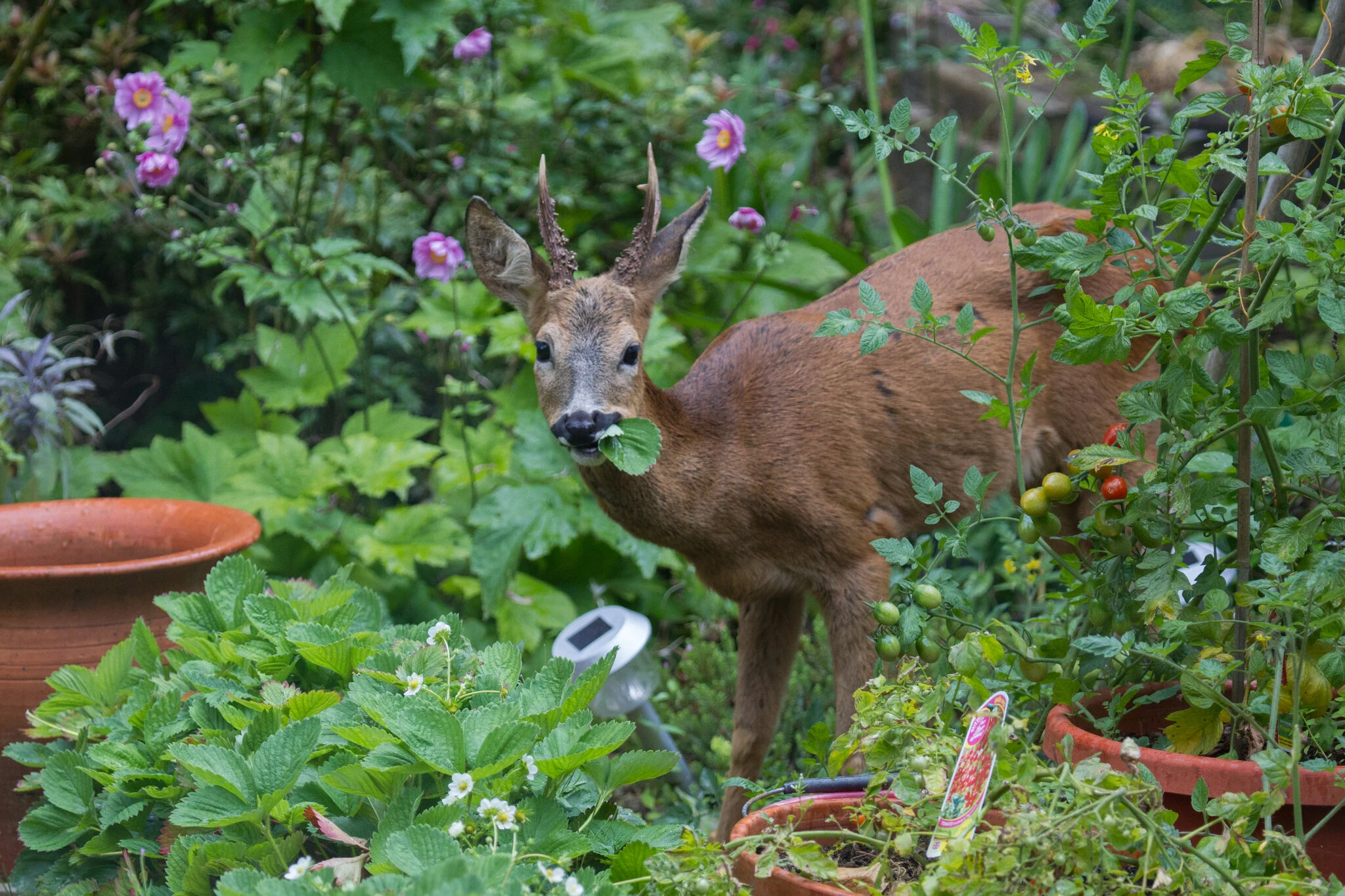
First, Let’s Get Inside a Deer’s Head
Before you spend a single dollar, you need to know how a deer thinks. Every tactic that actually works is designed to exploit a specific part of their nature. If you don’t get the ‘why,’ you’re just throwing stuff at a wall and hoping it sticks. This is the foundation.
Their Eyesight Is Surprisingly Bad
Deer have eyes on the sides of their heads, giving them an amazing panoramic view to spot predators. But this comes with a huge trade-off: their depth perception is terrible. They have a really hard time judging the height and distance of thin or narrow objects. This is our first major advantage. A fence they can’t properly gauge is a fence they are very reluctant to jump. It’s why something as simple as a few strands of fishing line can sometimes work wonders.
Their Nose is Their Superpower
A deer’s sense of smell is almost mythical—somewhere between 500 and 1,000 times better than ours. They navigate their world by scent. This is the entire principle behind commercial repellents. These products either smell like a predator is lurking nearby (think coyote urine) or make your prize-winning roses smell like something is rotten and inedible (that’s the magic of putrescent egg solids). Understanding this means you know you’re in a constant battle of scent, and a quick spritz now and then won’t cut it.
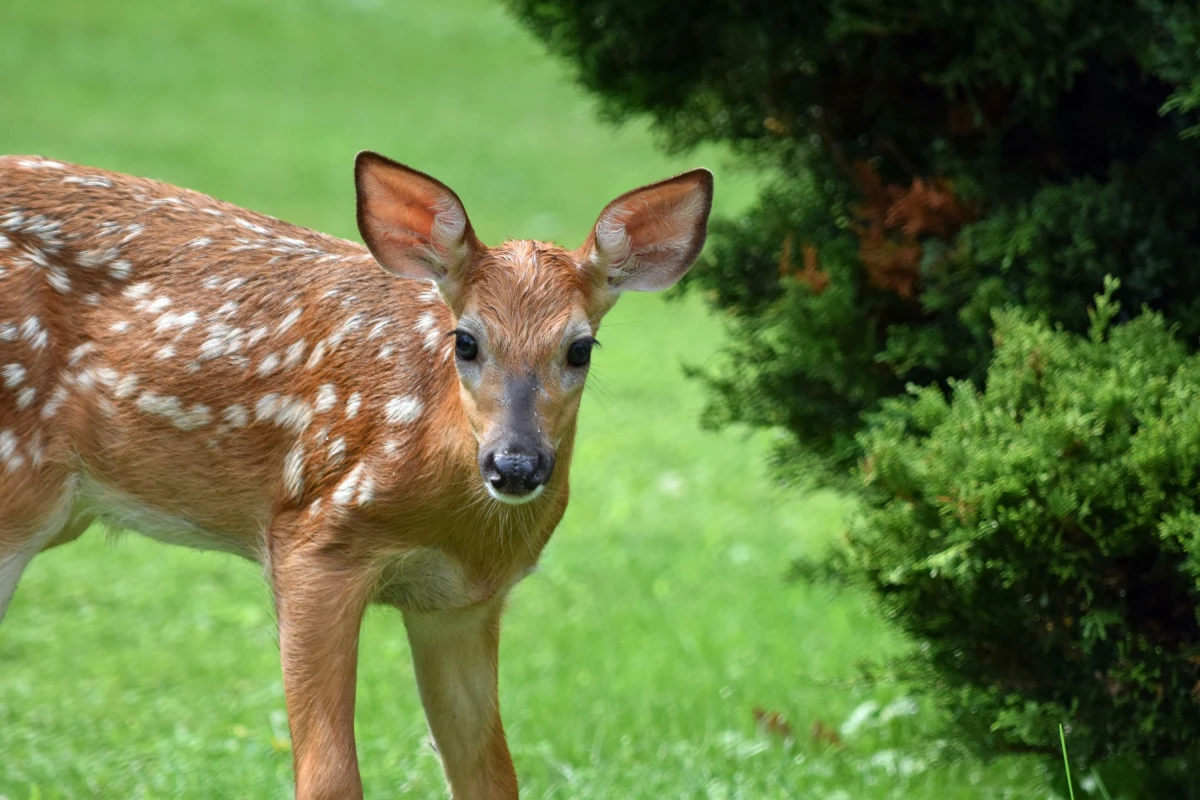
Yes, They Can REALLY Jump
It’s no joke. A motivated white-tailed deer can clear an 8-foot fence from a standstill. I’ve seen it with my own eyes. So, any fence under that height is a calculated risk. But here’s the key: they are cautious jumpers. They absolutely will not jump into a space if they can’t see a clear landing and escape route. They hate feeling trapped. This hesitation is exactly what we exploit with certain fence designs.
They’re Creatures of Habit
Deer are lazy, just like us. They follow the same trails and return to the same reliable food sources. Once they learn your garden is a safe buffet, they’ll be back. And they’ll teach their fawns to come, too. This is why you have to act decisively and consistently. Scare tactics often fail over time because a sprinkler that goes off every night just becomes part of the routine. The goal is to break their pattern for good.

The Real Foundation: Fencing That Actually Works
If you are truly serious about keeping deer out long-term, fencing is the only surefire answer. Everything else is just a temporary patch. It’s an investment, for sure, but it pays for itself in protected plants and, more importantly, your sanity.
Heads up! Before you build anything, always check with your local town and any HOA rules. They often have strict regulations on fence height, materials, and placement.
The Fort Knox: An 8-Foot Barrier Fence
For areas with serious deer pressure, this is the non-negotiable solution. We’re talking about properties bordering woods or in communities with a healthy deer population. The minimum height is 8 feet, period. Woven wire is the top-tier material—it’s expensive but will outlive you. A more budget-friendly option is heavy-duty black polypropylene mesh, which is less visible but can be damaged by falling limbs.
Now, let’s talk money. This is a significant project. For a professional install of a proper woven wire fence, you could be looking at anywhere from $25 to $50 per linear foot. If you’re handy, you could DIY a polypropylene mesh fence for closer to $10 to $15 per foot in materials. A word of warning from experience: do NOT skimp on the posts to save a few bucks. I once tried using lighter posts for a client’s fence, and a determined buck simply barreled through it, snapping the posts like toothpicks. It was a complete waste of time and money.
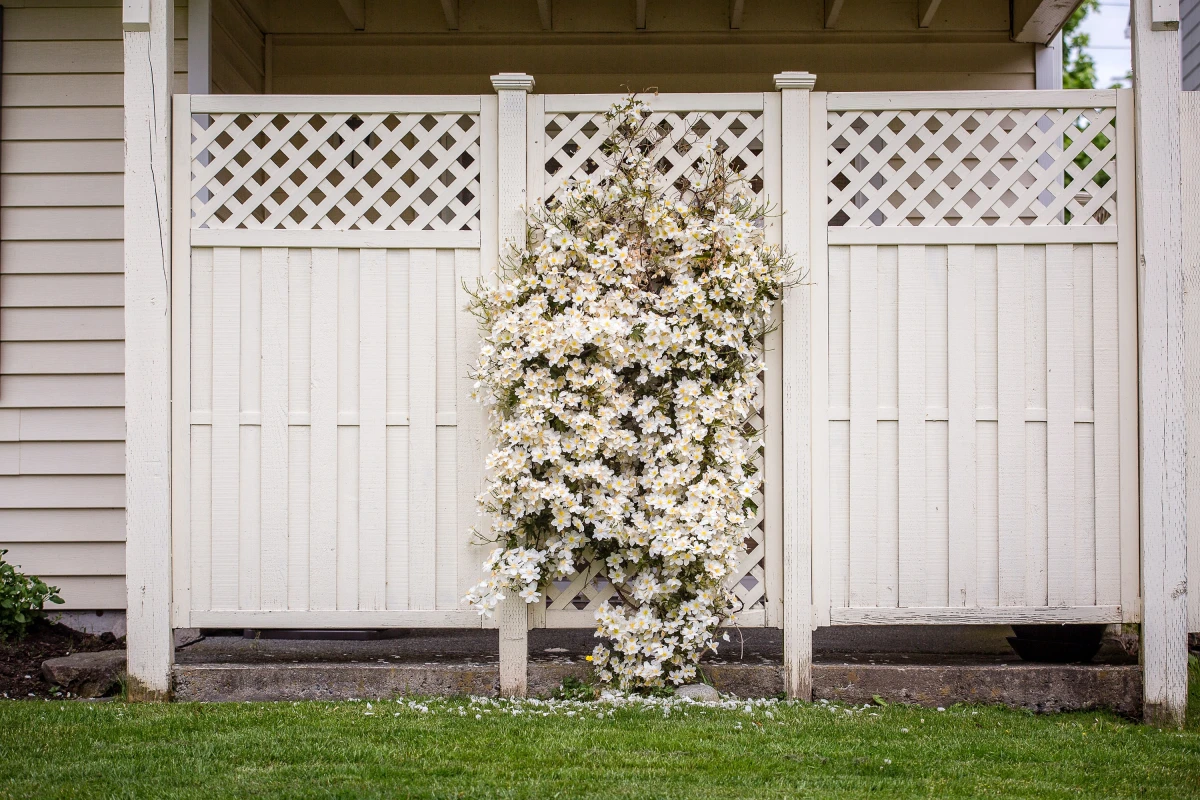
The Smart Alternative: The Double Fence
This is one of my favorite methods because it’s so clever. It plays on a deer’s poor depth perception and fear of being trapped. You simply build two lower, parallel fences. A common design is two 4- or 5-foot fences with a 4 to 5-foot gap between them. That space is the magic—it’s too wide for them to clear in one leap, but it feels too narrow for them to comfortably land in and jump out of. It messes with their head, and they’ll usually just go around.
For Low-Pressure Zones: The Fishing Line Fence
This trick gets a lot of buzz because it’s incredibly cheap and almost invisible. But let me be clear: this is only for areas with occasional deer traffic. It works by confusing them, not by stopping them. To get started, you just need some sturdy T-posts (which run about $5-$8 each at a home improvement or farm supply store) and a spool of 30- to 50-pound test fishing line for around $20. Space the posts 10-15 feet apart and string multiple lines, starting about a foot off the ground and adding another every foot up to about 4-5 feet high. The shimmering, barely-visible lines create a visual disturbance that makes deer nervous.
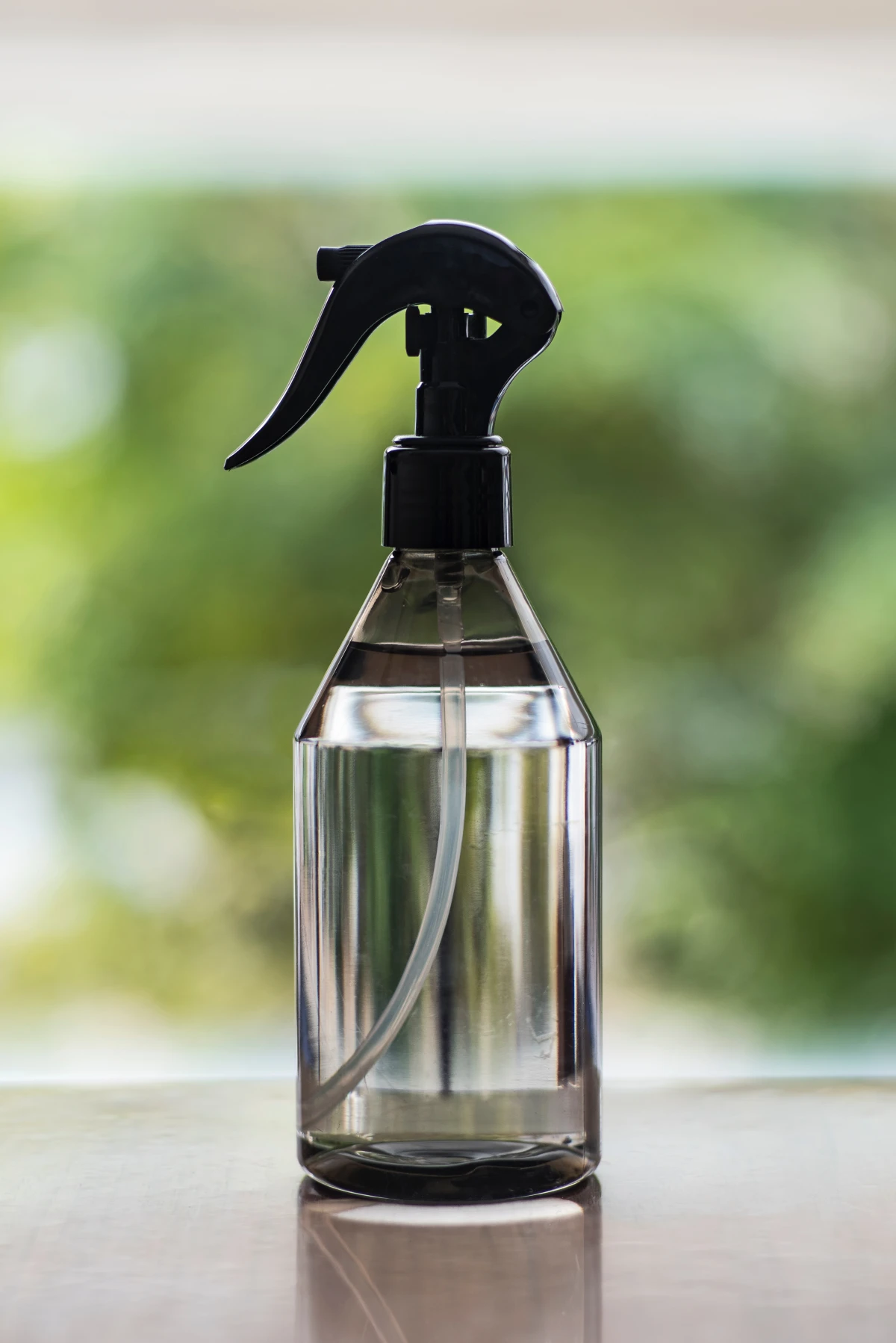
The Nuclear Option: Electric Fencing
An electric fence is a powerful psychological tool. It delivers a sharp, safe shock that teaches deer to associate your property with a bad experience. When done right, it’s incredibly effective.
SAFETY FIRST: Check your local laws! Many suburban areas restrict electric fences. Always use a UL-listed, low-impedance charger that pulses electricity—it’s much safer than a continuous current. And please, post warning signs. A quick tip from someone who learned the hard way: always wear thick, rubber-soled boots when checking the fence line. Trust me on that.
The best setup is a baited 3D fence. You put up an outer wire about 30 inches high and an inner fence a few feet behind it. On the outer wire, you attach little tabs of aluminum foil with a dab of peanut butter. The deer comes to sniff the treat, touches the foil with its wet nose, and gets a zap it will never forget. They learn to stay far, far away.
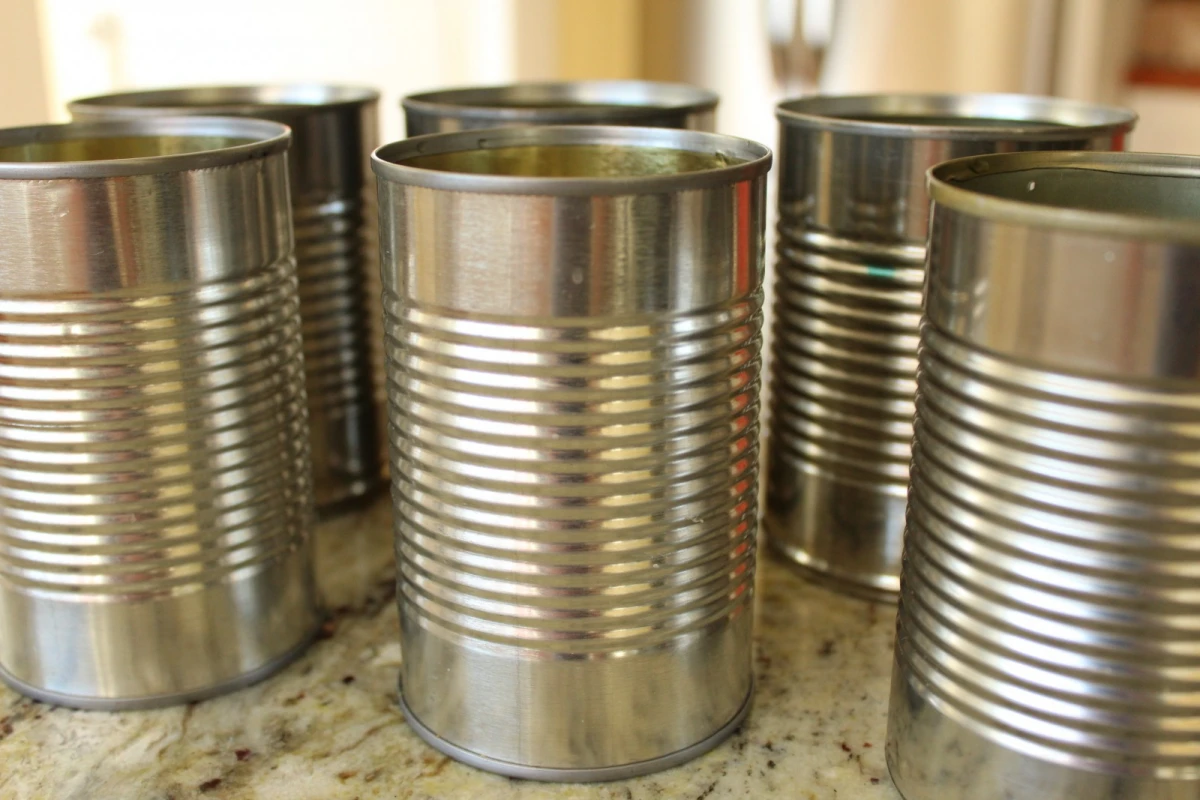
Layering Up: Repellents and Scare Tactics
In a pro strategy, repellents aren’t the main defense; they’re the backup. They’re perfect for protecting specific plants or adding extra security. Their main weakness? Deer can get used to them.
How to Use Repellents Like a Pro
The secret is rotation. Don’t just buy a bottle of Liquid Fence and use it all season. Deer will get used to the smell. The real pro move is to buy two or three different products with different active ingredients. For a few weeks, use a product based on putrescent egg solids (smells like rot). Then, switch to one based on coyote urine (smells like a predator). Then maybe try one with capsaicin (hot pepper taste). This rotation keeps them on their toes and perpetually wary.
Oh, and always reapply after a heavy rain, and don’t forget to spray the new growth—that’s the tender, tasty stuff they love most.

A Quick-Win You Can Do Tonight
If you are desperate and need to protect your plants right now, go buy a motion-activated sprinkler. Seriously. It’s my favorite scare tactic. The sudden blast of water and the ‘ch-ch-ch’ sound is highly effective. You can get a good one from brands like Orbit or Havahart for between $40 and $70. It takes 15 minutes to hook up to your hose and could save your hostas tonight.
The key with any scare tactic—be it a sprinkler, wind chimes, or shiny tape—is to move it every week or so. If it’s in the same spot for a month, it just becomes part of the landscape.
Smart Gardening: A Deer-Resistant Design
You can dramatically cut down on browsing by choosing plants deer hate. This isn’t about limiting your garden; it’s about designing a smarter one.
First, Know This: Nothing is “Deer-Proof”
I never, ever use the term “deer-proof.” A starving deer will try anything once. The goal is to fill your garden with “deer-resistant” plants—things that are very low on their menu. A quick tip: your local university extension service is your best friend here. A search for something like “Rutgers deer resistant plants” will give you a fantastic, research-backed list for your region.
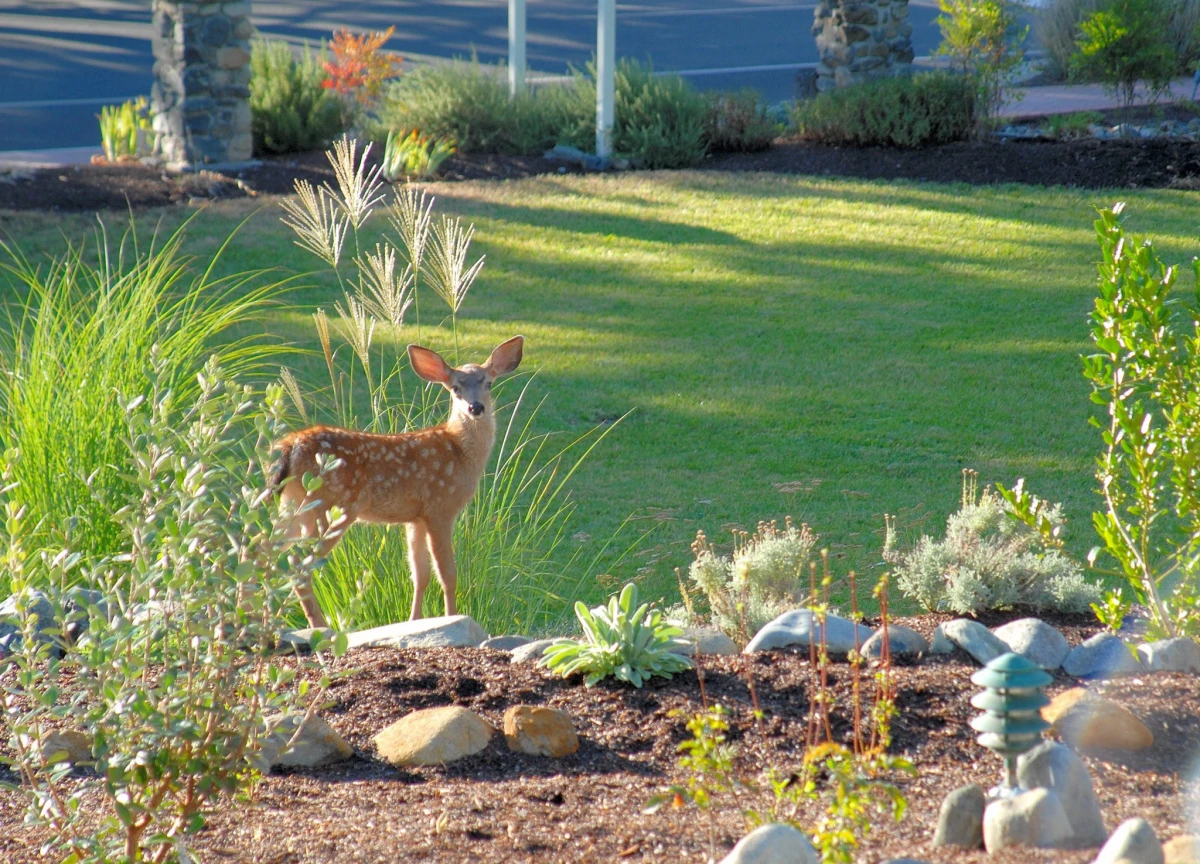
Generally, deer tend to avoid plants with certain characteristics. They dislike fuzzy leaves like Lamb’s Ear, tough or leathery leaves like Yucca, and prickly foliage like Barberry or Holly. They also turn their noses up at plants with strong scents, which is why things like Lavender, Rosemary, and Mint are great choices. Finally, many toxic plants, such as Daffodils, Foxglove, and Bleeding Hearts, are naturally off-limits. (Just be careful with these if you have curious pets or small children!)
A great design trick is to plant a border of the smelliest, prickliest plants around the edge of your property. Think of it as a living fence of lavender or Russian sage. This can convince a deer to move on before they even spot the tastier tulips you’ve hidden in the middle.
When It’s Time to Call in a Pro
Look, managing deer can be overwhelming. If you’ve tried a layered approach and you’re still losing the battle, it might be time for a consultation. A professional can help you assess if a full 8-foot fence is your only option, especially on a large or sloped property where installation is a beast. A good landscape designer can also be worth their weight in gold, helping you create a garden that is both stunningly beautiful and deeply unappetizing to your four-legged neighbors.
My final piece of advice is to be consistent. Deer management is an ongoing process, not a one-time fix. But by using a layered system of fences, repellents, and smart planting, you really can win this war and get back to enjoying your garden in peace.
Inspirational Gallery
What about plants deer supposedly hate?
While no plant is 100% deer-proof, you can dramatically reduce browsing by focusing on plants with strong scents, fuzzy leaves, or tough textures. Deer tend to avoid things like the silvery, aromatic leaves of Russian Sage (Perovskia atriplicifolia), the prickly foliage of Globe Thistle (Echinops), and the powerful scent of Ornamental Onion (Allium). Planting these in borders or among more tempting treats can act as a first line of fragrant defense.
A healthy adult white-tailed deer can clear an 8-foot fence from a standing start if sufficiently motivated.
This is why most professional deer fencing is at least 8 feet high. While a 6-foot fence may deter casual browsers, a truly determined deer (especially one escaping a predator or chasing a mate) won’t be stopped. For most suburban gardens, an 8-foot height is the gold standard for true peace of mind.
The Double-Fence Trick: Deer have poor depth perception, which you can use to your advantage without building a fortress. A simple, effective psychological barrier can be created by installing two parallel fences. A 5-foot outer fence and a 4-foot inner fence, spaced about 4-5 feet apart, creates a visual obstacle that deer are extremely hesitant to jump into or over. They can’t gauge the landing, so they’ll usually move on to an easier meal.
- Deters deer without constant reapplication.
- Protects your entire garden perimeter at once.
- Works 24/7, in any weather.
The secret? A motion-activated sprinkler. Devices like the Orbit Yard Enforcer connect to your hose and use an infrared sensor to spray a startling, but harmless, jet of water at any animal that enters its zone. It’s a surprisingly effective tool in a layered defense strategy, especially for protecting a specific, high-value area.
Don’t let your defenses become predictable. Deer are adaptable and can become accustomed to a single scent over time, rendering your repellent useless. The key is to rotate products.
- Month 1: Use a fear-based repellent like Plantskydd, which uses dried blood to simulate a predator’s presence.
- Month 2: Switch to a taste/smell-based repellent like Liquid Fence, which relies on rotten eggs and garlic.
By alternating every month or two, you keep the deer confused and wary, preventing them from ever feeling safe in your garden.
Common Mistake: Only spraying the plants you love most. Deer are creatures of habit and will establish pathways through your yard. For repellents to be truly effective, you must spray the perimeter of the entire garden area you want to protect, not just individual plants. This creates a scented ‘fence’ that discourages them from even entering the buffet, rather than just finding the un-sprayed items on the menu.
Liquid Fence: This popular repellent works primarily by creating an unpleasant odor and taste from putrescent egg solids and garlic. It needs to be reapplied every 2-3 weeks and after heavy rain. It’s very effective but requires consistent maintenance.
Plantskydd: This is an animal-blood-based product (porcine or bovine) that works by triggering a fear response. It adheres to plants exceptionally well, often lasting for several months, even through rain. It’s more of a ‘set it and forget it’ solution for the season.
Many gardeners use Plantskydd as a long-term base and Liquid Fence for touch-ups on new growth.
A deer fence doesn’t have to look like a prison yard. For a more integrated look, consider black vinyl-coated chain link or polypropylene mesh. From a distance, the black color makes the fence virtually disappear against a wooded or shaded backdrop. Planting perennial vines like clematis or Virginia creeper (use with caution, it’s aggressive) can also soften the structure and help it blend seamlessly into the garden’s design.










